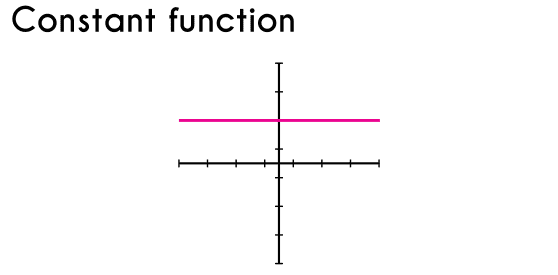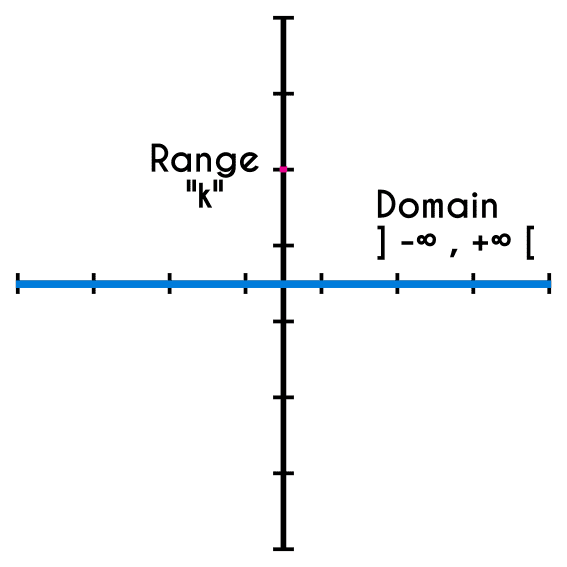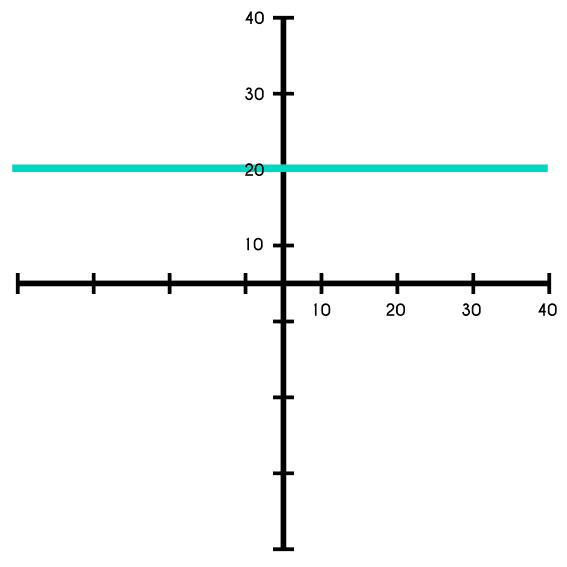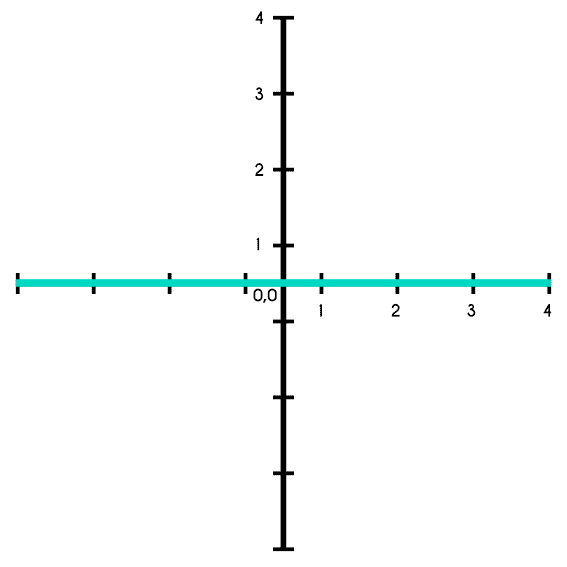Constant function - definition and domain and range
This article will be about The constant function, the graphic of this function, and how to define the domain and range of the function.
Definition of the constant function
The constant function has the form f(x) = k where “k” is a constant, this means that it is any real number, the value of x does not affect the function, because in the equation of the function there is no “x”, for example, if the equation of the function were k+x, then “x” would affect the function, but in a constant function is not like that, therefore the range of the function will always be the value of “k”, this I why these types of functions are called “constants”, because the value of the range will be constantly “k”.

The constant function can be commonly seen in two independent variables, for example, if we take this to physics, one of the variable could be the number of meters that a rock moves while time passes, and the other variable could be the time, this function would be: f(t)=0, where p(t) is the movement of the rock, “t” would be the time and 0 is the “equation” of the function, as we know, to move an object, we have to apply an external force to the object, in the case of the rock, it does not have any force moving it, so it will stay in the same position for ever, or until something moves it, this is why the motion of the rock through the time will be always 0.
Domain and range of a constant function
The domain of a constant function are the real numbers, or ] -∞ , +∞ [, this is like that because even when the range of the function will not change, the “x” value can take any value, while the range of the function will be limited to the value of “k”.

The graphic of the function will always be a horizontal line, where the cut of the function with the “y” axis will be in the value of “k”.
Examples of constant functions
Example 1:Graphic the function f(x)=20
First we have to draw a Cartesian plane with the needed dimensions to graphic the function, in this case we are going to draw a plane where every point will be from 10 to 10.

And now we with the Cartesian plane drawn the only thing left to do is to draw a horizontal straight line in “y” = 20.
Example 2: If we have a vehicle that advances at a constant velocity, graphic the function that shows the acceleration of the vehicle with respect to the time.
Before we graphic this function, a little reminder: when an object is moving to a constant velocity, the object is having 0 acceleration, this means that the acceleration of the vehicle is equals to “0”, so it does not matter how much time passes, the acceleration will be 0.
Knowing this we draw the Cartesian plane and then we draw a line in y = 0.

Related articles